While Phil Specter is the acknowledged creator of the “Wall of Sound”, the Indian inventor of the “Wall of Smell” remains anonymous. His ingenuity, however, can be found in a variety of unexpected locations–olfactory force fields that leave one staggering backward with an expression of confusion and shame as if they had walked nose-first into a well-Windexed sliding glass door.
With public school on vacation, I transitioned to another of Sankalp’s volunteer programs: Street Kids School. In Jaipur there are many children who, for various reasons, spend their days roaming the streets–begging, foraging for themselves, or just wandering around. This school offers them an alternative–a structured environment to receive supervision and basic education even if they never enroll in a “real school”. Their school day begins at 10:00 am with English class until 11:30, then a break for lunch/recess to play with the volunteers, then math class from 12:00 to 1:00.
There is one full-time teacher and she divides the students up among the volunteers. We each gather our group in a corner of the school room and lead them through simple lessons that we plan ourselves. As students, the kids are like the Bad News Bears–loveable and hilarious to watch but constantly inventing ways to frustrate their coach. Rohit methodically dancing his way across the classroom, oblivious to the unsolved equation “2 x 1 =” on the blackboard. Sanju sniffing her snot yo-yo back up an inch before it reached the floor. Sneha sharpening her pencil into oblivion. Dhanoo sustaining her peaceful protest against writing in her notebook. Arun chasing 3 times 8 down the rabbit hole. “25!” “No.” “26!” “No.” “27!” “No.” “28!” “No.” “29, 30, 31, 32, 33, 34, 35!!!”
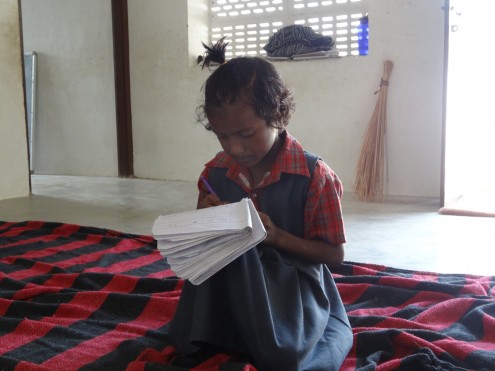
Future speaker of fluent English
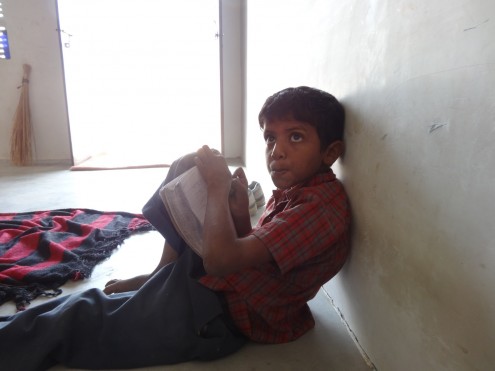
Future conqueror of algebra
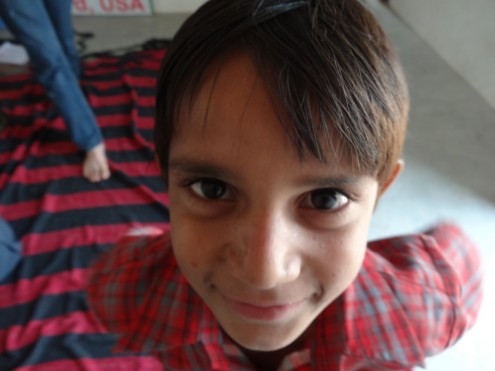
Future Bollywood dance idol
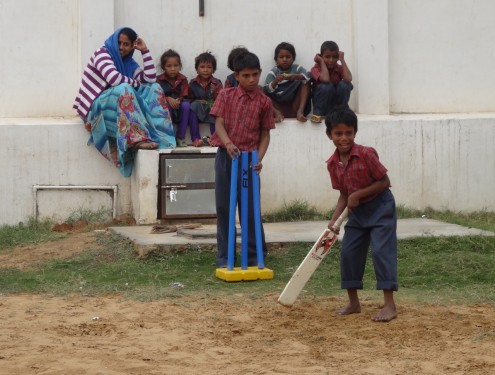
Recess: a crafty batsman defending his wicket before throngs of adoring fans
Over the weekend I had the good luck to catch up with my friends Aroon and Smita who were in Jaipur for the wedding of a friend. We did a little sight-seeing at the Amber Fort and the Birla Temple, a little shopping, and then finished the day at a very fancy Diwali party at the Taj Rambagh Palace hotel. The hotel has an enormous garden which was decorated with lights and flowers, there were Rajasthani musicians and dancers performing, fireworks, and an incredible buffet of Indian dishes and desserts. As always, it was most welcome to have old friends in new places.
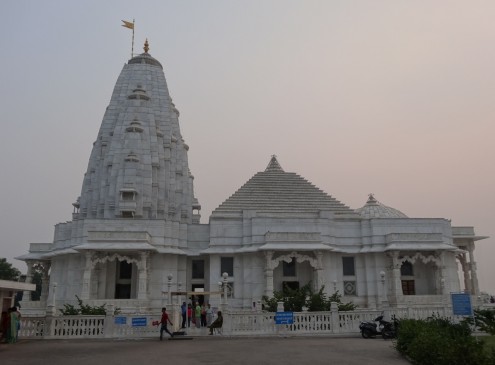
Birla Temple
The next night, the volunteers had our own Diwali party at our house. Our program directors had acquired a ridiculous stockpile of fireworks, and after a special dinner and dressed in our most Indian outfits we headed to the roof to light them. Many of the surrounding homes and businesses were decorated with “Christmas lights” and seemingly every household was lighting fireworks. Between the hours of 9:00 and midnight, the skyline was ablaze and the sound of explosions was constant. It took us over two hours to detonate our arsenal, and on account of our small roof space, sparks and ash from our own and neighbors’ rockets were landing all about us. With respect to thrill-seeking, safety standards, and regard for the environment, it was a quintessential third-world experience–and a good party.
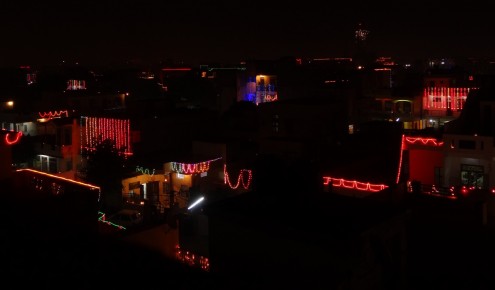
Diwali lights from our rooftop
The next day we rode to Agra to visit the Taj Mahal. Agra maintains a low-traffic zone around the building specifically to protect it from pollution damage, but on the day after Diwali we could barely see it standing out from the white clouds as we sipped chai on a hotel rooftop. (Side note: when in India, if you are offered a masala chai do not pass it up. The ubiquitous hospitality beverage of milk heated and brewed with black tea, sugar, and spices is perfect for any time of the day. Of the local non-alcoholic comfort drinks I have tasted on this trip, my top 5 would be: 5) Argentinian mate, 4) Turkish apple tea, 3) Brazilian açai smoothie, 2) Indian masala chai, and 1) Costa Rican “licuados”).
The next morning the viewing was better and we visited the building up close. It lives up to the hype; it is easily the most beautiful building I have ever seen. Just after sunrise we walked around all four of its symmetrical sides and then into the mausoleum. Awesome place to see in person.
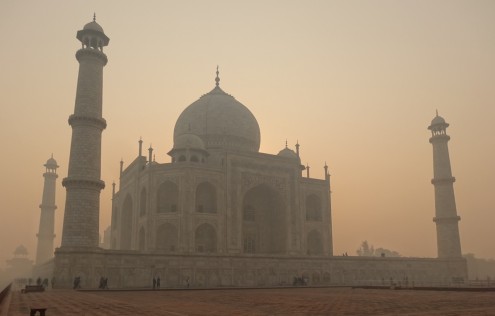
Taj Mahal orange at sunrise
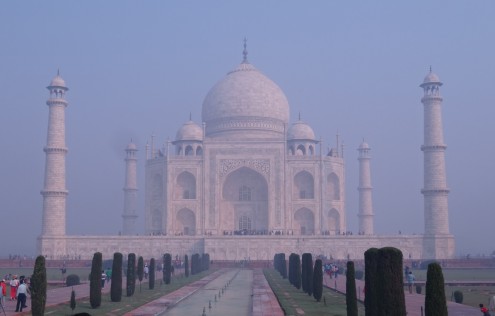
Taj Mahal – the splendid approach
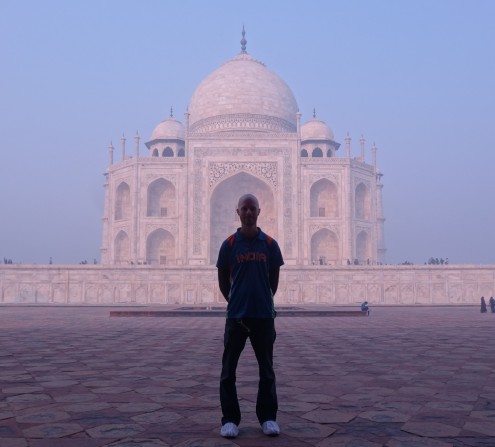
The next weekend we traveled to Ranthambore. We made the requisite visit to the local fort (the 7th Indian fort I have seen) and in the morning went for a jeep safari in Ranthambore National Park. While we didn’t see the grand prize of tigers in the wild, we did find several antelope, gazelles, deer, and exotic birds.
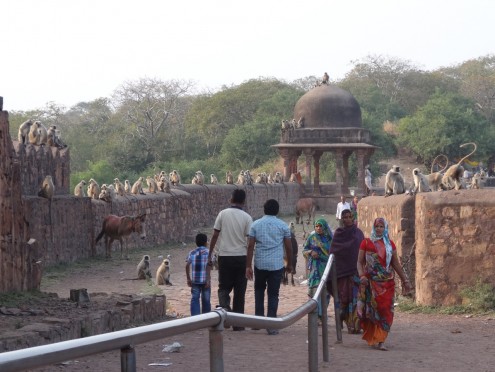
Ganesh Temple at Ranthambore Fort
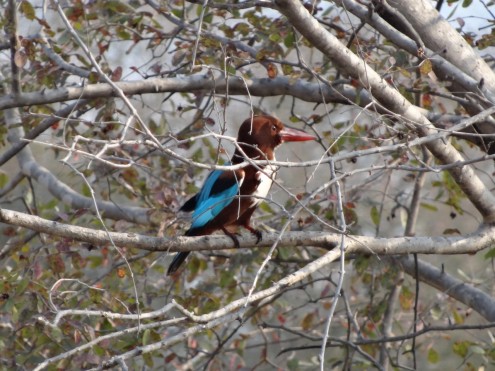
Kingfisher
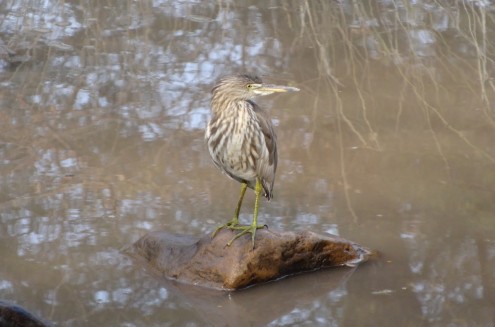
Heron
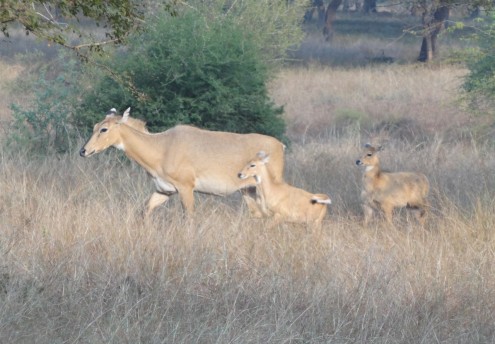
Antelopes

Gazelle
The prevalence of cows in India is not just a rumor, it is a reality. They are allowed to wander free in the cities and are the only participants in the traffic game that have an acknowledged right-of-way. Goats and monkeys also mingle with people in urban areas, but the cows seem to outnumber and outrank them. Here are a few of my favorites.
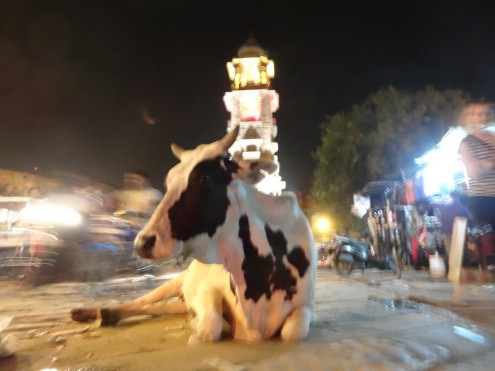
Jodhpur bazaar shopper
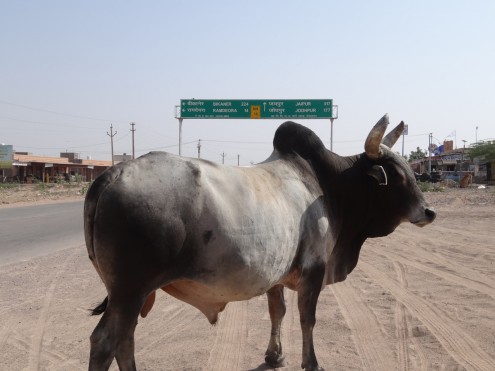
Highway patrolman
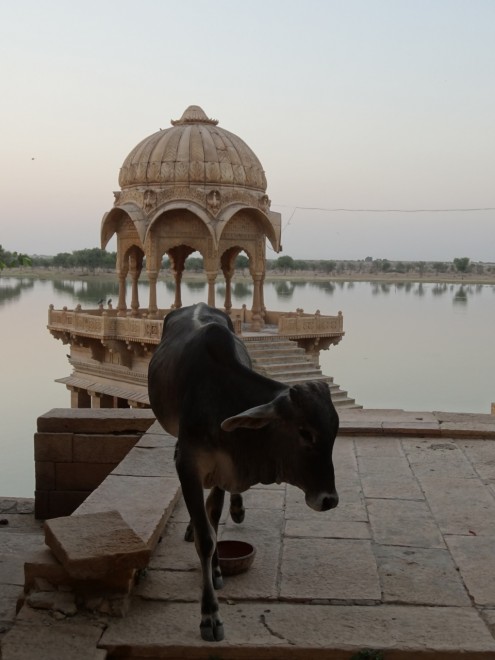
Jaisalmer early riser
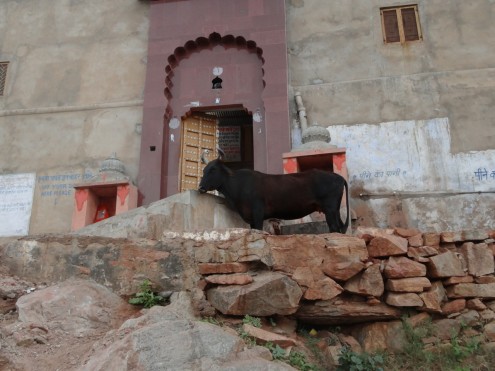
Pushkar faithful
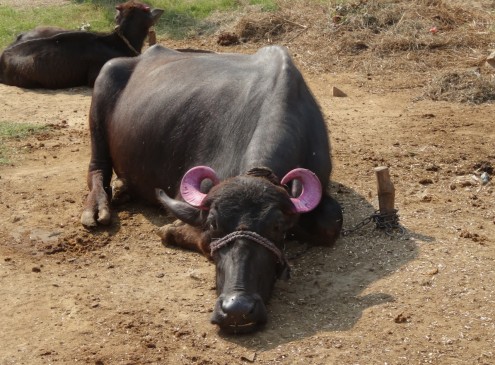
Rare purple-horn
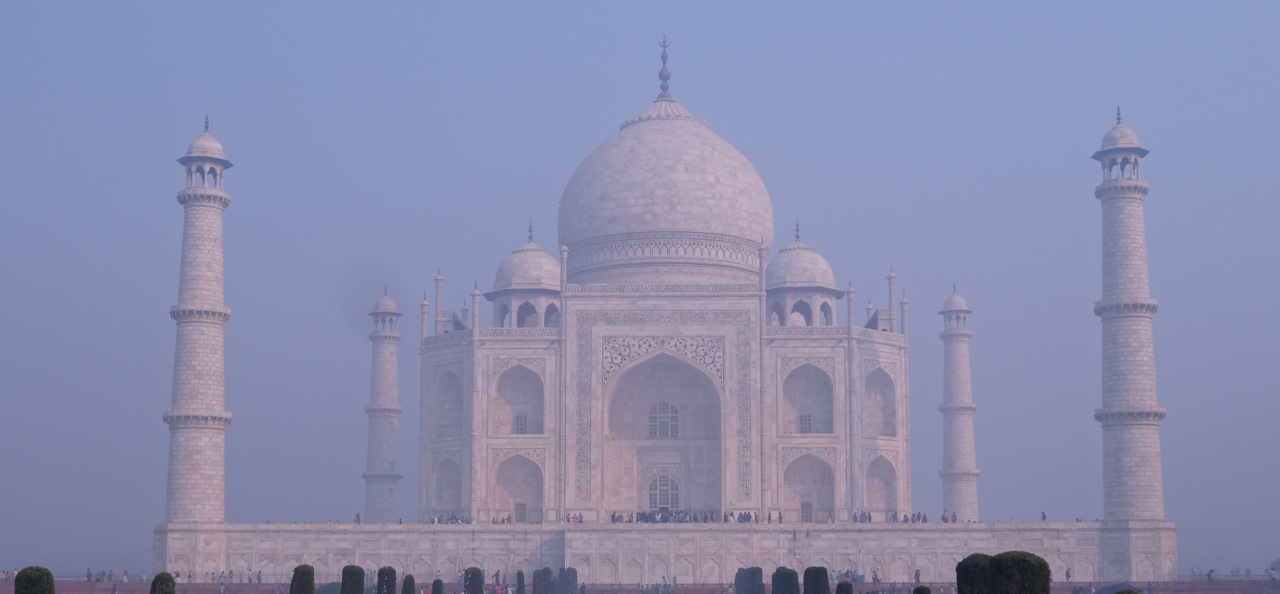




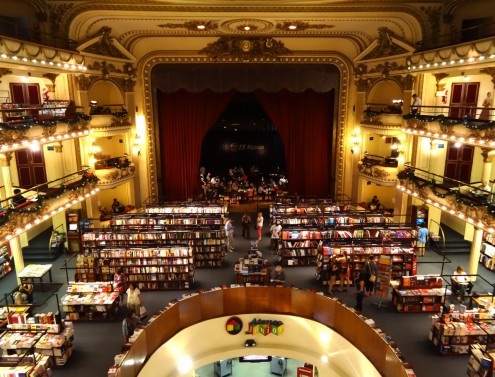

Do they often paint the cows horns there?
I love seeing your pix of the kids!
Be well.
Cecilia, yes they do often paint the cows’ horns. I have a few theories as to why: 1) While many cows are allowed to roam free, some of these must have owners. Since Indians would never harm a cow, this may be a way of “branding” them. 2) Indians consider cows to be sacred and painting their horns to beautify them might be a display of reverence. 3) Indians love bright colors! Any chance to use turquoise, yellow, or red must be availed!